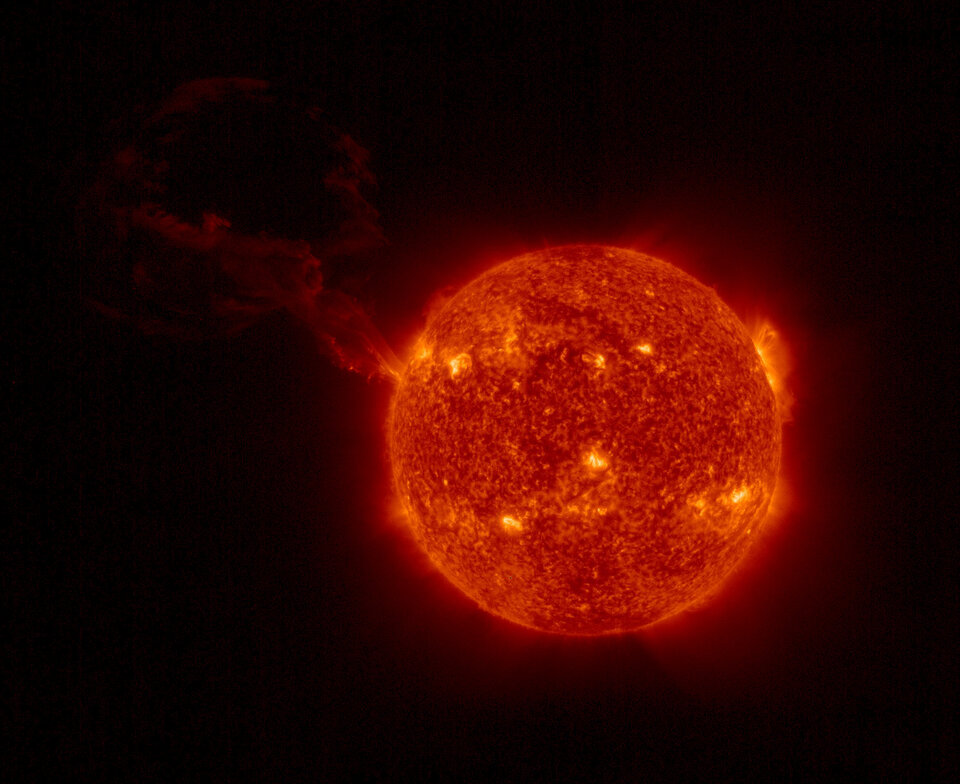ESA's Solar Orbiter captures giant solar eruption
According to the European Space Agency (ESA), the recent solar eruption seen by Solar Orbiter is the largest solar prominence eruption ever observed in a single image together with the full solar disc.

The ESA/NASA Solar Orbiter spacecraft recently captured a giant solar eruption that extended millions of kilometres into space. The eruption, which took place on 15 February, was captured by Full Sun Imager (FSI) of the Extreme Ultraviolet Imager (EUI) on board the spacecraft.
According to the European Space Agency (ESA), the recent solar eruption seen by Solar Orbiter is the largest solar prominence eruption ever observed in a single image together with the full solar disc.
ESA defines solar prominences as large structures of tangled magnetic field lines that keep dense concentrations of solar plasma suspended above the Sun's surface, sometimes taking the form of arching loops. They are often associated with coronal mass ejections, which if directed towards Earth, can wreak havoc with technology and everyday lives.
The event did not send a blast of deadly particles towards Earth and there is also no sign of the eruption on the solar disc facing the spacecraft, the agency said on Friday.
Wow! The giant solar eruption of 15 Feb seen by #SolarOrbiter – the largest solar prominence ever observed in a single image together with the full solar disc, thanks to the novel design of our Full Sun Imager. https://t.co/gtF6DLfkEy #ExploreFarther #WeAreAllSolarOrbiters pic.twitter.com/VS5jqRrcPU
— ESA's Solar Orbiter (@ESASolarOrbiter) February 18, 2022
The event was also observed by other space missions including NASA's Parker Solar Probe. The ESA/JAXA BepiColombo mission which is currently in the vicinity of Mercury's orbit also felt the blast
"And while this event did not send a blast of deadly particles towards Earth, it is an important reminder of the unpredictable nature of the Sun and the importance of understanding and monitoring its behaviour," ESA said.
ESA said that the prominence observed by its Solar Orbiter will open up new possibilities to see how events like these connect to the solar disc for the first time.










